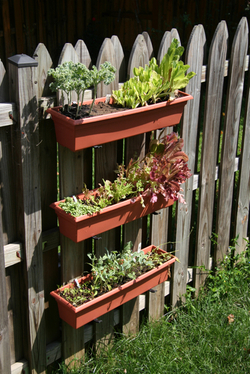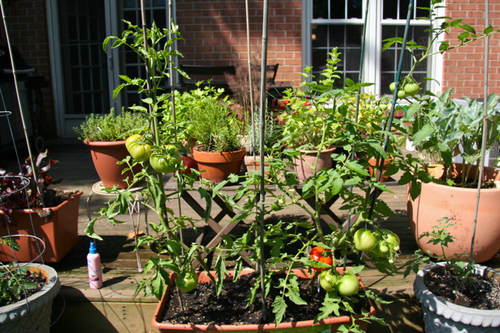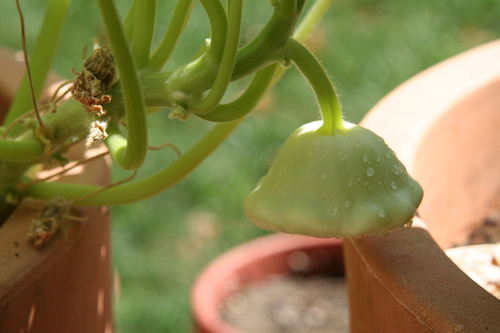
Urban/Suburban Hippies
Hello Amalah…
I’ve never submitted a question before, but have been a loyal follower of your multiple columns since I found you at Zero to Forty. I feel like I should ask my question in a clever way but I also know that I will fail so I’m just going to get to it – can you explain how you got into or started vegetable gardening? I’m intrigued and think I would like to try this. We recently moved from a townhouse to a house with an actual yard and space that we can grow things. (If it helps or matters, I live in Northern Virginia.)
Also how do you deal with increasing “crunchiness”? Despite formerly making fun of crunchy people as “damn hippies” because of you I am now officially a cloth diaper enthusiast. Home grown produce, cloth diapers, what’s next?!?! (Note, I’m genuinely only interested in the first veggie gardening question.)
If you choose to answer my question, feel free to edit and make me sound funnier/clever-er/more Amalah-esqe if you will.
Thanks!
M
I know, right? I try to imagine what the Me of several years ago would think of the Me of today: making her own baby food, cloth diapering, composting, and obsessing over home-grown Brussels sprouts and asparagus. All while wearing perfectly sensible shoes.
Actually, I can TOTALLY imagine what she’d think of me: LAME HIPPIE WEIRDSAUCE.
But! I don’t care. Being lame hippie weirdsauce is practical, cost-effective, easy and (shut up) fun.
One big distinction about our vegetable garden: We don’t actually plant anything in the GROUND. At least not yet. The soil in our backyard is terrible, and the previous owners were big fans of chemical pesticides and lawn treatments. Anything edible that was there when we moved in (which wasn’t much — just some herbs) got yanked up and tossed. We now use environmentally-friendly (and not to mention kid- and pet-safe) treatments on our yard and gardens and are bring the crappy, unbalanced soil back to life with our own compost, but we’re probably not going to dig out an actual vegetable garden bed for another season or so.
 But that’s the best part: You don’t NEED to. We do everything in containers, and I was completely floored to learn that you can pretty much grow any vegetable you want in a container. (A self-watering container at that, which you can either buy as a kit or build yourself.) Last year we grew kale, arugula, carrots, parsnips, beets, turnips, three kinds of squash, peppers, cauliflower, fennel, a bajillion herbs and more tomatoes than we knew what to do with — all in a series of different-sized pots and planters around our (small) deck, with window boxes adorning our fence, leaving the boys with the full use of our (even smaller) yard. This year we’ve added garlic, onions and potatoes…so far.
But that’s the best part: You don’t NEED to. We do everything in containers, and I was completely floored to learn that you can pretty much grow any vegetable you want in a container. (A self-watering container at that, which you can either buy as a kit or build yourself.) Last year we grew kale, arugula, carrots, parsnips, beets, turnips, three kinds of squash, peppers, cauliflower, fennel, a bajillion herbs and more tomatoes than we knew what to do with — all in a series of different-sized pots and planters around our (small) deck, with window boxes adorning our fence, leaving the boys with the full use of our (even smaller) yard. This year we’ve added garlic, onions and potatoes…so far.
If you’re just starting out, though, or have never gardened before or have zero confidence in your ability to keep plants alive (guilty on both counts), start with an herb garden. Go to a nursery and buy a big pot and some soil and some small already-sprouted seedlings. (Growing from seed is cheaper, but can be a pain if you don’t start them early enough, which in our climate usually requires use of a heat lamp inside, and gaaaaah your eyes are glazing over, I can sense it.) Start with easy, hardy plants like basil, rosemary, thyme, chives, cilantro — whatever you use already in cooking. (If you plant mint, put it in its own pot — it’s viciously take-over-y.) Plant. Keep soil moist. Move outside for sun. Move back inside if the temperatures drop or toss a sheet over the pot at night. And…you’re done.
Some of your herbs will come back the next year — some might not, if you leave them out all winter. Either way, you can reuse the planter and the soil (stuff grows better in re-used soil anyway). If your herb garden was a success and you’re feeling ambitious, get these two books: Ed Smith’s Incredible Vegetables from Self-Watering Containers and Garden Anywhere by Alys Fowler. There are HUNDREDS of books on container gardening, and probably all contain the same basic information, but these are the ones we use. The first book is a non-flashy, straightforward guide: what to plant in what kind of container, and when, and where, and when to harvest what you grow. (If you’ve ever had a hard time gauging ripeness at the grocery store, you’ll appreciate that part.) The second book is a bit more aspirational (though great if you’re working in a small, urban space and think that limits you in any way) as the author has FULLY embraced the crunchiness and taken it to Martha Stewart levels. I adore her use of vintage wooden wine boxes as planters…not so much her tips on the etiquette of dumpster diving.
Oh, I do hope you decide to try a vegetable garden — start small! Some herbs and one measly tomato plant from the farmer’s market is how we did it, and now we’re literally bouncing off the ceiling because HEIRLOOMS! SALAD! ASPARAGUS! RAMPS! Homemade pestos from home-grown cherry tomatoes or kale! Ratatouille! It’s so much fun, and I cannot even pretend that I’m not a huge dork about it.
Top Photo from Thinkstock



